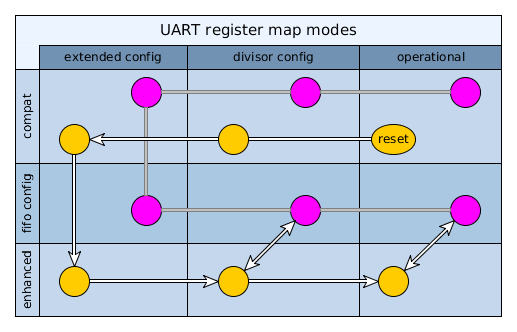Hi,
I have one question regarding SCR register of UART for AM3874.
In SCR register, Bit3(TXEMPTYCTLIT), this bit "0" shows Normal mode ofr THR interrupt. And "1" shows THR interrpt is generated when TX FIFO and TX shift register are empty.
I don't know what is "Normal mode" (bit3="0"). I think bit3="1" is normal mode. Because THR interrupt is generated when TX FIFO is empty. But when bit3="0" is "Normal mode". What is this normal mode?
Please let me know.
Best regards,
Michi



